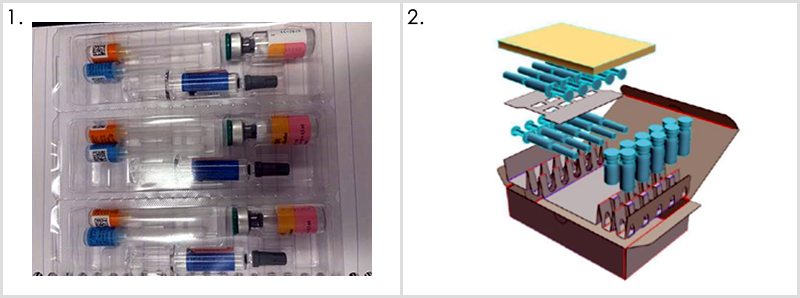No 5/6 - 2025
Important Information About Pentavac® – Changed Packaging
Important Information About Pentavac® – Changed Packaging
Pentavac® is used in the childhood vaccination program at 3, 5, and 12 months of age and protects against diphtheria, tetanus, whooping cough, polio, and Haemophilus influenzae type b (Hib).
The vaccine contains a pre-filled syringe containing the DiTeKiPol component and a vial with powder containing the Hib component. These two components must be mixed before injection.
Statens Serum Institut (SSI) is receiving numerous inquiries from general practitioners about cases where the vaccine has been administered without proper mixing. This results in the child not receiving protection against Hib. SSI therefore wishes to emphasize the importance of properly mixing and administering Pentavac®. Misadministration must be reported as an unintended incident (UTH).
Pentavac® was previously supplied in packages where the DiTeKiPol and Hib components were combined in a smaller unit (1). Since November 2024, the two components have been supplied separately within the same package (2).

Handling of Misadministration
If a child has not received the Hib component during the 3-, 5-, or 12-month vaccination, the following measures can be implemented:
- Administration of a standalone Hib vaccine with its corresponding solvent, which can be ordered by phone through SSI’s order department via telephone: 3268 3111
Or - Revaccination as soon as possible with a correctly mixed Pentavac®.
Vaccination with a correctly mixed Pentavac® after misadministration may lead to an increased risk of local side effects. The risk will depend on the number of previous vaccine doses as well as the time interval since the last vaccination, which was mistakenly given without the Hib component.
Please note that the minimum interval for the next dose in the vaccination program must be observed.
Read more about the recommended intervals here.
(Department of Infectious Disease Epidemiology and Prevention)